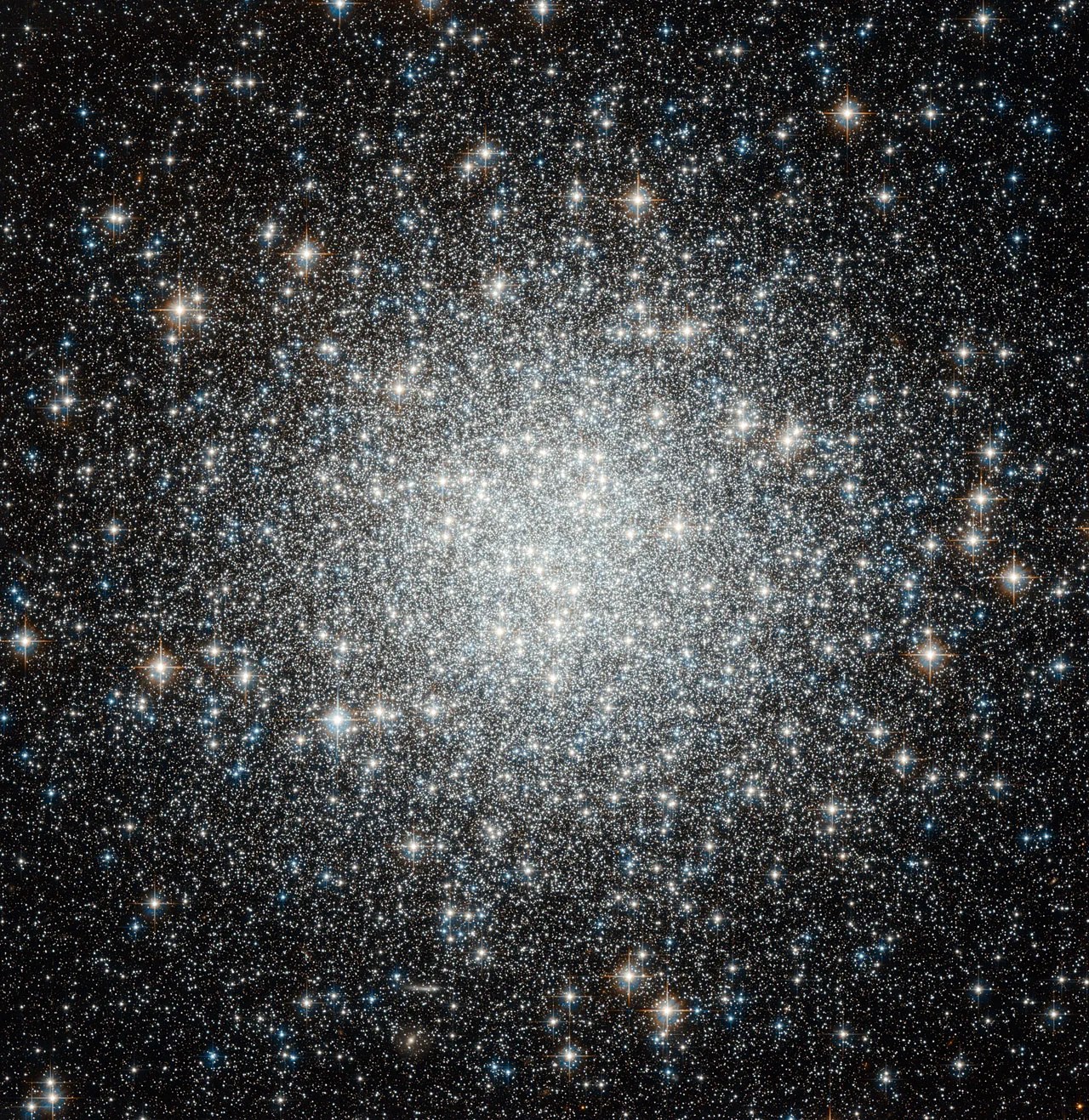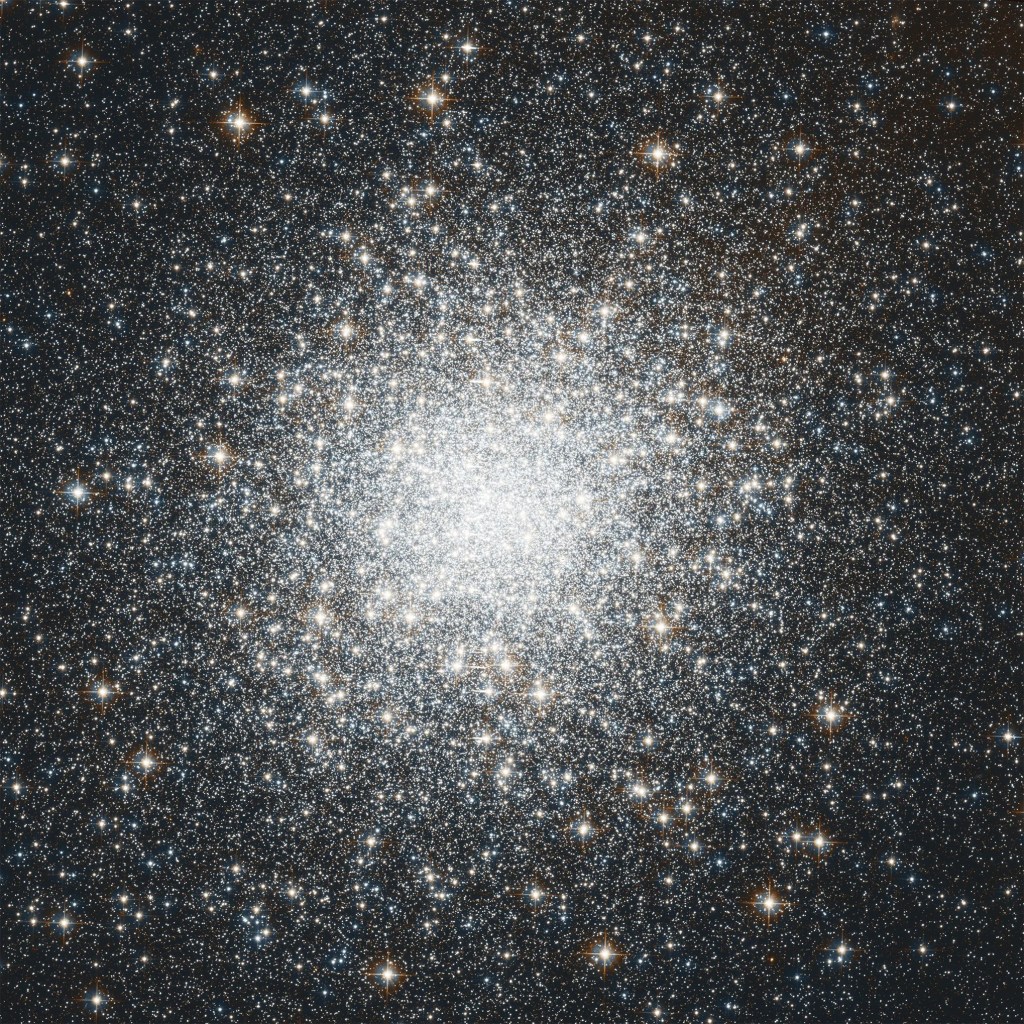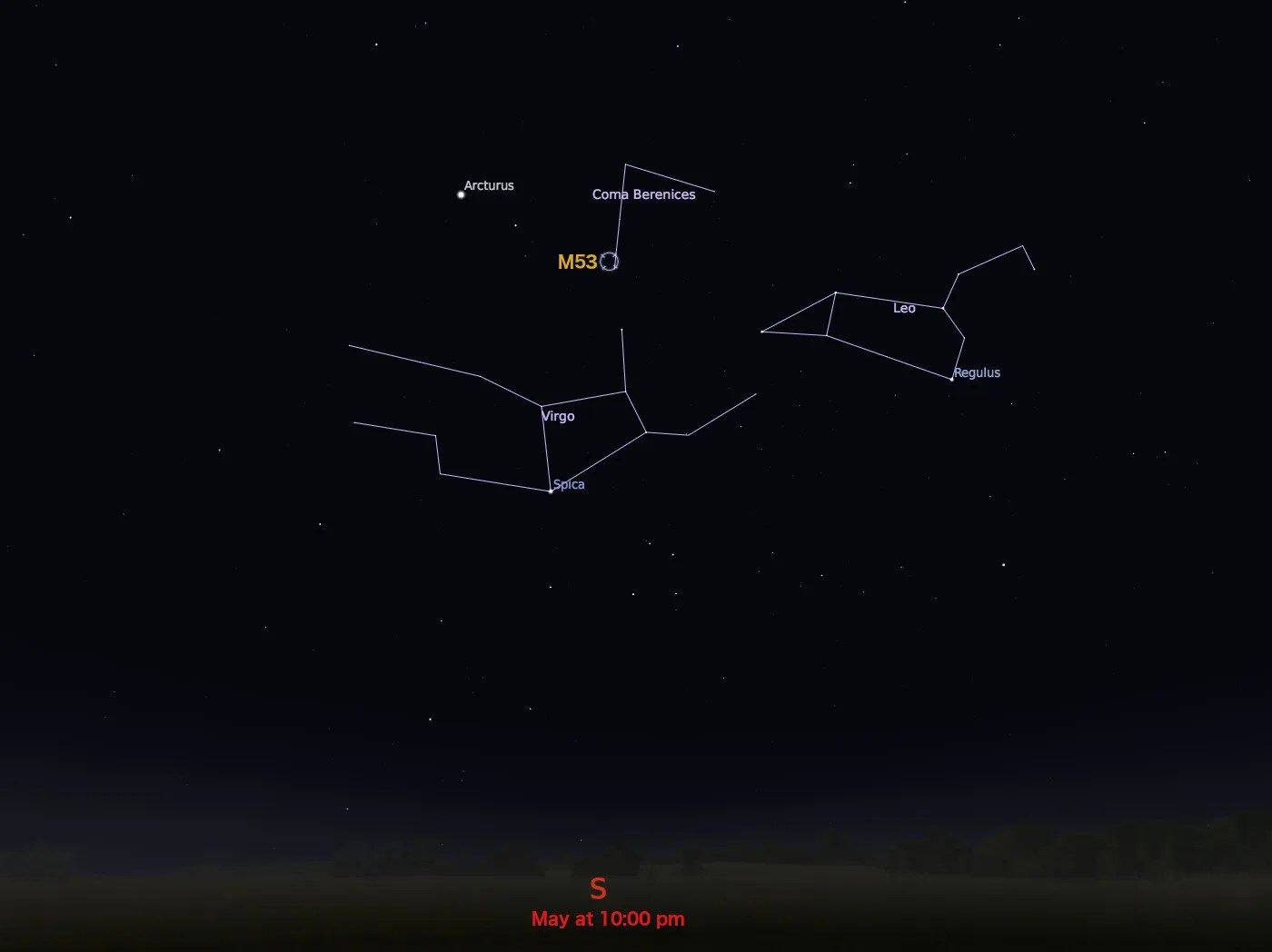Messier 53
Messier 53 is one of the Milky Way's most distant globular clusters from Earth.
Distance
59,700 light-years
Apparent Magnitude
8.3
constellation
Coma Berenices
object type
Globular Cluster

Discovered by the German astronomer Johann Elert Bode in 1775, Messier 53 is 59,700 light-years away, one of the most distant globular clusters from Earth. Best observed in May, it has an apparent magnitude of 8.3 and can be seen through a small telescope in the constellation Coma Berenices. Larger instruments will resolve the cluster’s individual stars.
Globular clusters are much older and larger than open clusters, so they are generally expected to contain more elderly, red stars and fewer young, blue stars. But Messier 53 has surprised astronomers with its unusual number of a type of star called blue stragglers. All the stars in a globular cluster are expected to form around the same time, so they are expected to be roughly the same age. But blue stragglers appear to be brighter and more youthful than they should be. Although their precise nature remains mysterious, these unusual objects are probably formed by close encounters, possibly collisions, between stars in the crowded centers of globular clusters like M53.
For more information on Hubble’s observations of M53, see:
Explore Hubble's Messier Catalog
The following pages contain some of Hubble’s best images of Messier objects.

Overview The Messier catalog, begun by astronomer Charles Messier in the 18th Century and revised over the years, includes some…

Better known as the Crab Nebula, Charles Messier originally mistook Messier 1 for Halley’s Comet, which inspired him to create…

Hubble's image of Messier 2 is comprised of visible and infrared wavelengths of light.
































